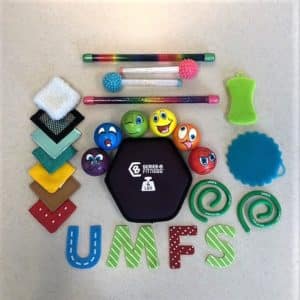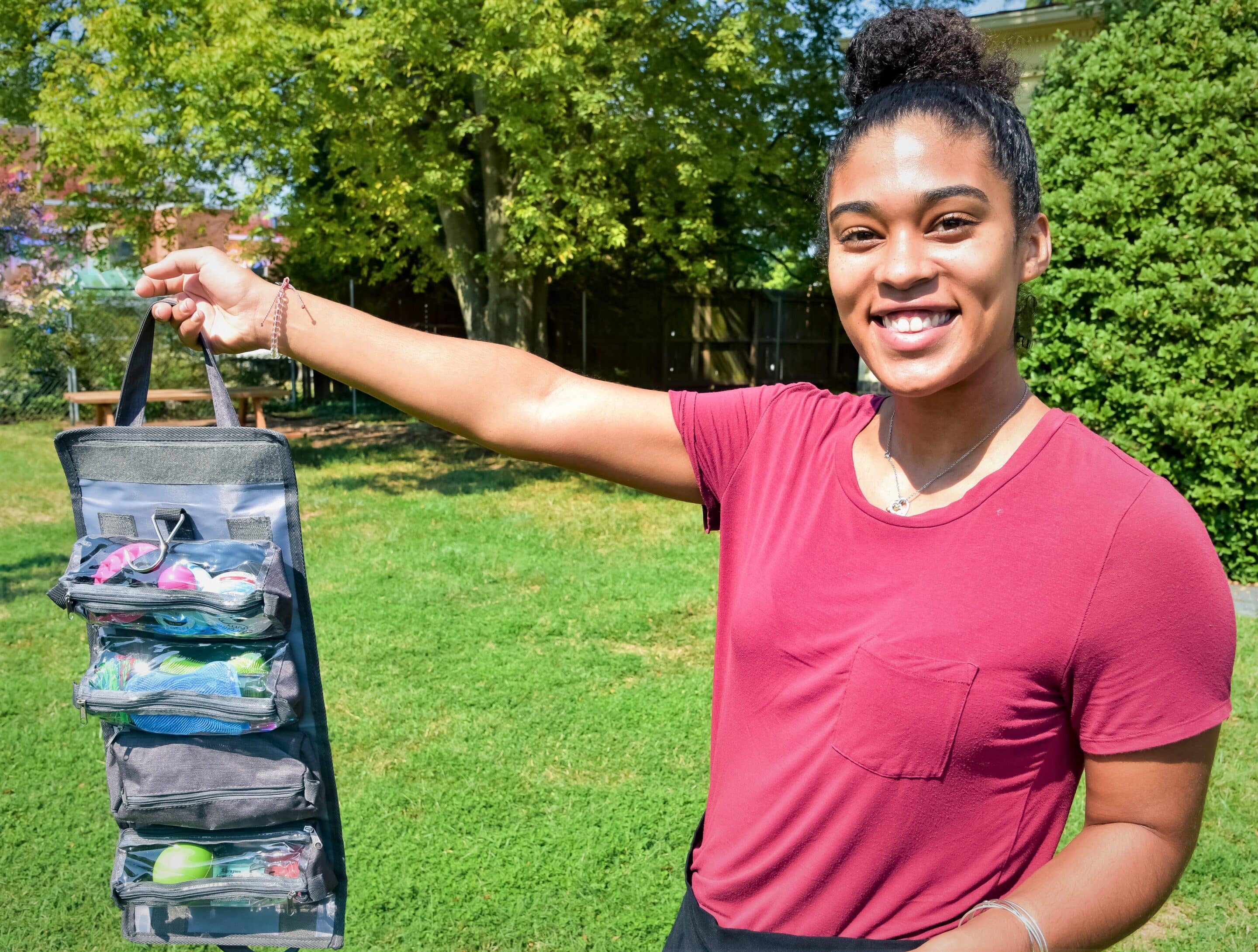To stimulate or to soothe. These are the primary responses our bodies formulate to react to external stimuli. Our senses are intended to help us interpret the outside world, and each sense contributes in its own way providing our brains with information.
The human body has five traditional senses and one additional sense deserving acknowledgement. The basic five are: sight (eyes), smell (nose), taste (tongue), touch (all skin surfaces), and sound (ears). The lesser-known sense is proprioception, which refers to your understanding of your body in space. Proprioception is knowing where your body parts are in relation to other people, objects, etc., and the strength needed for appropriate movement or adjustment of those parts.
When we engage these senses, the body is built to accept the input of information through “sensory organs.” From there, the body relays the information to neurons, transforming it into electrochemical signals. Electrochemical signals are sent by our body’s neurons once stimulated. These electrochemical signals are intended to navigate and find their appropriate place within our nervous system. Once inside the nervous system, the signals are fired to the brain to potentially merge into a process called sensory integration. At this point, it is up to the brain to interpret the signals received and route it to the appropriate sense-specific area. This process is ongoing and almost instantaneous, in most cases, as we are intended to respond to stimuli promptly.
To this point, we have discussed the process of receiving information and its travels, but we have yet to unpeel our responses. Since our bodies are comprehensive organisms, we are expected to utilize multiple parts simultaneously with every response. Our memory alone plays a major role in our reactions. For instance, if we have a previous memory of not feeling well and eating a burger, we may lean on prior experience and assume every sense of a burger will in turn make us sick. Although this is a response to sensory stimuli, it is not the aspect we will be focusing on.
About the author: Ceci Billings is a graduate of Virginia Wesleyan University in Virginia Beach. As a member of the Marlins’ womens’s basketball team, Ceci was named to the Old Dominion Athletic Conference’s All-Academic team. During her summer internship at UMFS, the Northern Virginia native has been connecting with youth in the Child & Family Healing Center and helping them overcome challenging situations through recreational therapy.
The brain is expected to maneuver signals to their appropriate destinations within the cortex and then generate a suitable response to the stimuli. When this process is done properly, it is considered normal. But in the instances when an individual displays an unusual or inappropriate response, we could be looking at symptoms of sensory processing disorder (SPD) — formerly known as sensory integration dysfunction. SPD is a diagnosis in which the brain struggles to receive information from the sensory organs and responding to said information.
Individuals with SPD appear uncoordinated, clumsy, hard to engage in conversation or play and over-sensitive or under-responsive to stimuli. SPD is more often identified in children and commonly noticed in developmental conditions. Due to the common difficulty in play and conversation, some skills which are normally built through reciprocal play and group interaction will begin to lag behind in development. Currently, SPD is not a “stand-alone disorder,” but many professionals are eager to see its categorization change in the future. This would allow for greater research to be conducted into effective treatments and a general respect can grow in the profession for its existence. Similar to many other developmental disorders, the symptoms of SPD are extremely unique to the individual so they exist on a spectrum.

Each sensory kit includes: aroma Putty (silly putty with essential oils); back stretcher; body brush; stress balls; flexi stick; koosh ball; liquid motion bubble; stretchy string; puzzle cube; activity or mindfulness; minute cards; notepad and colored pencils; magnetic sculpture toy.
With SPD not currently being recognized as an official medical diagnosis and needs being highly individual, treatment is limited. Presently, families with an affected child are recommended to schedule regular appointments with an occupational therapist (OT), as they are the most notably trained on this matter. In general, treatment of SPD is meant to help the child complete activities that usually present as difficult. Sometimes known as exposure therapy and more appropriately identified as sensory integration therapy, clients are retraining their brains to build a tolerance for stimuli they could not previously handle. In the integration approach, clients are exposed to sensory stimulus by a trained professional in a structured and repetitive manner. By exposing the client to a formulated pattern of stimuli, we can attempt to aid the individual’s ability to process and react to stimuli more efficiently. Individuals affected by SPD can benefit from creating a coping list to identify what tools to utilize on a daily basis. Possible coping tools can include: fidget toys, texture squares, weighted lap pads, body brushes, stress balls, noise canceling headphones, sunglasses and other objects to engage or calm the senses. In addition to the direct exposure therapy, it is extremely helpful for the individual and their caretakers to understand specific triggers and appropriate redirection.
At the UMFS Child and Family Healing Center, we are implementing the use of sensory kits in multiple locations on our campus to help our young people with SPD and other similar symptom disorders manage and cope with their challenges.
We are currently adding a sensory kit to each of our residential cottages in the individual and group therapy rooms, as well as making kits available for when youth are in mobile transport. The starting intention for these kits are to soothe or stimulate. For our children and teens who appear under-reactive, we suggest the student use the stimulation kit for increased sensory engagement. On the other side of the spectrum, some children require tools to relax and soothe the senses. In this case, we advise staff to bring along our soothing kits for car rides to help cope with any stressful stimuli. Our hope is through observation and report, we will see a decrease in challenging behaviors in the described settings with the use of these exciting new tools.
